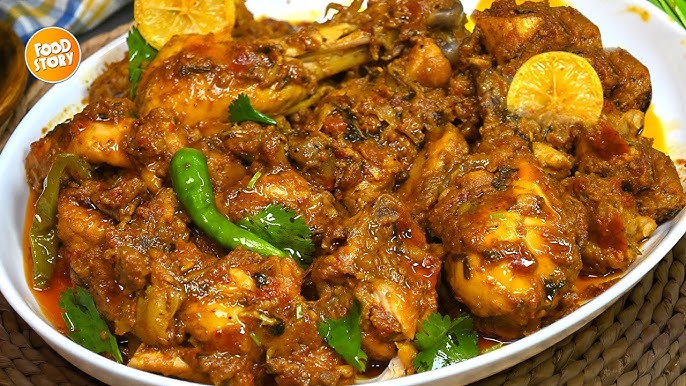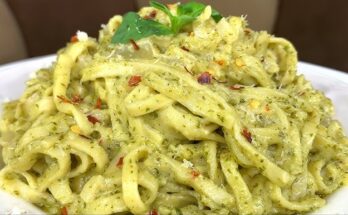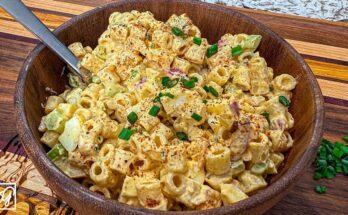Chicken Masaledar Recipe: Chicken Masaledar is one of those dishes that instantly makes your kitchen smell heavenly. Bursting with rich spices, juicy chicken, and a thick gravy, it’s a dish that represents the heart of Indian cooking. Unlike simple chicken curry, Chicken Masaledar is bold, fiery, and layered with deep flavors that come from freshly ground spices, slow cooking, and the right balance of heat.
So, what makes it special? Well, it’s the masala – a mix of onions, tomatoes, ginger-garlic paste, and aromatic spices that cling to each piece of chicken. When cooked right, every bite is a burst of flavors: spicy, tangy, and savory all at once. No wonder it’s a family favorite across India, served at both casual dinners and festive feasts.
The popularity of Chicken Masaledar lies not just in its taste but in its versatility. You can make it as spicy as you like, pair it with chapati, naan, or rice, and even modify it with regional twists. Whether you’re a beginner or an experienced cook, once you master the basics of Chicken Masaledar, you’ll never run out of ideas to make it your own.
Ingredients You’ll Need
Before diving into the cooking process, let’s get our kitchen ready with the essentials. Good Chicken Masaledar is all about balancing the right ingredients.
Main Ingredients for Chicken
- Chicken – 1 kg (cut into medium pieces, preferably with bone for richer flavor)
- Oil or ghee – 4 tablespoons
- Yogurt – ½ cup (whisked)
Spices and Masalas
- Onions – 3 large (finely chopped)
- Tomatoes – 3 large (pureed or finely chopped)
- Ginger-garlic paste – 2 tablespoons
- Green chilies – 2 (slit lengthwise)
- Red chili powder – 2 teaspoons
- Coriander powder – 2 teaspoons
- Turmeric powder – 1 teaspoon
- Garam masala – 1 teaspoon
- Whole spices (bay leaf, cloves, cardamom, cinnamon stick) – 1 tablespoon
Optional Ingredients for Added Flavor
- Kasuri methi (dried fenugreek leaves) – 1 teaspoon
- Fresh cream – 2 tablespoons (for richness)
- Fresh coriander leaves – handful (for garnish)
Ingredient Substitutions for Variations
- Instead of yogurt, you can use coconut milk for a South Indian twist.
- Replace chicken with paneer or boiled eggs for a vegetarian version.
- If you prefer less oil, use a non-stick pan and reduce the quantity by half.
These ingredients form the backbone of your Chicken Masaledar, ensuring you get that rich, flavorful gravy and tender chicken every time.
Step-by-Step Cooking Guide
Cooking Chicken Masaledar is like telling a story—it builds up slowly, with each stage adding depth to the final dish. Let’s break it down step by step:
Step 1: Prepping the Chicken
Start by cleaning and washing the chicken thoroughly. Pat it dry to remove excess water. In a bowl, marinate the chicken with yogurt, turmeric, a pinch of salt, and a little red chili powder. Let it rest for at least 30 minutes. This step ensures that the chicken absorbs flavors deeply and stays juicy while cooking.
Step 2: Making the Masala Base
Heat oil or ghee in a heavy-bottomed pan. Add whole spices—bay leaf, cloves, cardamom, and cinnamon. Once they release their aroma, add finely chopped onions. Sauté until golden brown. Next, stir in the ginger-garlic paste and green chilies, letting the raw smell disappear. Add the tomatoes and cook until the mixture turns into a thick masala base. This step is crucial as it defines the richness of the gravy.
Step 3: Cooking the Chicken in Masala
Now, add the marinated chicken pieces into the masala. Stir well to coat each piece with the mixture. Add coriander powder, red chili powder, and salt. Cook on high heat for 5 minutes to sear the chicken and lock in the juices.
Step 4: Simmering for Flavor
Pour in 1 to 1.5 cups of water (depending on the gravy thickness you prefer). Cover and let it simmer on low flame for 25–30 minutes, stirring occasionally. This slow cooking allows the spices to blend perfectly and the chicken to become tender.
Step 5: Garnishing and Serving
Once cooked, sprinkle garam masala and crushed kasuri methi for an added kick. Garnish with fresh coriander leaves and a drizzle of cream if you like it rich. Your Chicken Masaledar is now ready to be served hot with naan, roti, or rice.
Tips to Perfect Chicken Masaledar
Cooking Chicken Masaledar isn’t just about following a recipe—it’s about mastering a few tricks.
- Always use fresh spices for maximum flavor.
- Don’t rush the onion-tomato masala base; slow cooking makes all the difference.
- Marinating the chicken enhances tenderness and taste.
- If you like a thicker gravy, cook uncovered for the last 5 minutes.
- For a smoky flavor, give it a quick “dhungar” (coal smoke) at the end.
Perfect Chicken Masaledar is about patience, practice, and passion. Once you get it right, you’ll want to make it again and again.
Serving Suggestions
One of the best things about Chicken Masaledar is how flexible it is when it comes to serving. This dish can be the centerpiece of a casual family dinner or the star of a festive spread. The rich gravy and bold spices make it a natural partner for a variety of Indian breads and rice dishes.
Best Side Dishes with Chicken Masaledar
Chicken Masaledar pairs wonderfully with cooling side dishes that balance the spice. A simple cucumber raita or boondi raita works perfectly. You can also serve it with a fresh salad of onions, tomatoes, cucumbers, and lemon for a crunchy contrast. Papad and pickle on the side also elevate the whole experience, giving the meal more textures and flavors.
Pairing with Indian Breads
If you’re in the mood for something hearty, serve it with naan, butter roti, or tandoori parathas. The thick, flavorful gravy clings to these breads beautifully, making each bite satisfying. If you prefer lighter options, phulkas or chapatis work well too. For a rustic touch, try pairing it with bajra or jowar rotis.
Pairing with Rice Varieties
Rice is another excellent companion. Steamed basmati rice lets the masala shine through, while jeera rice adds a subtle earthy flavor. For something more festive, pair it with peas pulao or even biryani-style rice for an indulgent treat. If you’re health-conscious, brown rice or quinoa can be used as healthier alternatives without compromising taste.
Variations of Chicken Masaledar
The beauty of Indian cooking lies in its adaptability. Chicken Masaledar has different avatars depending on the region and personal preferences. Here are some popular variations:
South Indian Style Masaledar Chicken
This version uses curry leaves, mustard seeds, and coconut milk to bring a southern twist. The gravy is creamier and has a subtle sweetness from the coconut, balancing the fiery spices.
Dhaba Style Masaledar Chicken
If you’ve ever eaten at a roadside dhaba in India, you know the taste is unforgettable. Dhaba-style Chicken Masaledar is richer, spicier, and often cooked with extra oil or ghee. It usually has a smoky flavor and is meant to be enjoyed with tandoori rotis.
Low-Oil or Healthy Chicken Masaledar
For those watching their diet, this variation cuts down on oil by using non-stick cookware and steaming the chicken instead of frying. Adding Greek yogurt instead of cream can also reduce calories while keeping the dish flavorful.
Nutritional Value of Chicken Masaledar
Even though Chicken Masaledar is indulgent, it also packs in nutrition, especially when cooked mindfully.
Calorie Count per Serving
On average, one serving (about 1 cup) contains 280–350 calories depending on the amount of oil and cream used.
Protein, Fat, and Carbs Breakdown
- Protein: 22–25g (from chicken)
- Fat: 15–18g (mostly from oil/ghee and cream)
- Carbohydrates: 8–10g (mainly from onions, tomatoes, and yogurt)
Vitamins and Minerals
Chicken is a great source of B vitamins, iron, and zinc. Tomatoes provide vitamin C and antioxidants, while spices like turmeric add anti-inflammatory benefits. With slight tweaks, you can make this dish both flavorful and health-conscious.
Storage and Reheating Tips
One of the best things about Chicken Masaledar is that it often tastes even better the next day as the spices settle and deepen in flavor. But you need to store it correctly.
Refrigeration Guidelines
Cool the curry before storing it in an airtight container. It will last up to 2 days in the fridge without losing taste.
Freezing Chicken Masaledar
For longer storage, freeze portions in freezer-safe containers. It stays good for 2–3 weeks. Just remember to thaw it in the fridge overnight before reheating.
Reheating Without Losing Flavor
Reheat on a low flame and add a splash of water to maintain the gravy consistency. Avoid microwaving for too long, as it can dry out the chicken. If possible, reheat on the stovetop for the best taste.
FAQs about Chicken Masaledar Recipe
1. Can I use boneless chicken for Chicken Masaledar?
Yes, boneless chicken works well and cooks faster. However, chicken with bones gives a richer, more authentic flavor.
2. How spicy is Chicken Masaledar?
It’s moderately spicy, but you can adjust the heat by reducing or increasing chili powder and green chilies.
3. Can I cook Chicken Masaledar in a pressure cooker?
Absolutely! Pressure cooking speeds up the process. Cook for 2–3 whistles and then simmer without the lid to thicken the gravy.
4. What’s the difference between Chicken Curry and Chicken Masaledar?
Chicken curry is usually lighter with more gravy, while Chicken Masaledar is thicker, spicier, and packed with bold flavors.
5. Can I prepare Chicken Masaledar without onions and garlic?
Yes, you can skip them and rely more on tomatoes, yogurt, and spices. It will taste slightly different but still delicious.
Conclusion
Chicken Masaledar is not just a dish; it’s a flavor-packed experience. From the marinated chicken to the slow-cooked masala, every step adds depth and richness. Whether you enjoy it with naan, rice, or parathas, this dish guarantees satisfaction. The beauty of Chicken Masaledar lies in its adaptability—spicy, mild, creamy, or smoky, it can be customized to suit your taste. Once you’ve mastered it, you’ll find it becoming a regular star in your kitchen.



